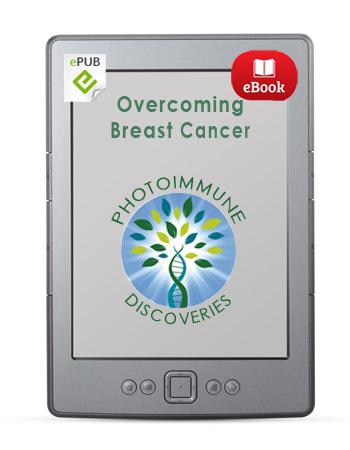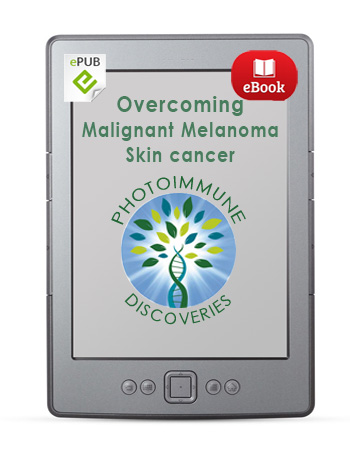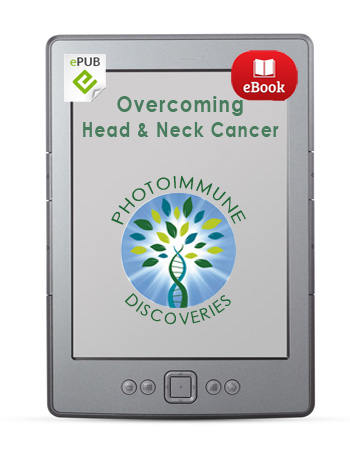Description
Overcoming Breast Cancer
The Promise of Photodynamic Therapy and Other Innovative Therapies
Breast cancer is the most common type of cancer in women worldwide. Some two million new cases are diagnosed each year, and breast cancer accounts for at least one in every 10 deaths from cancer in women. The overall incidence of this disease is still on the rise, though some of this increase is due to mammography screening programs that are picking up larger numbers of very early-stage disease situations.
Overcoming Breast Cancer: The Promise of Photodynamic Therapy and Other Innovative Therapies highlights a new approach to the treatment of breast tumors, one rooted in the astounding cancer-fighting potential of Photomedicine (light-based medicine). Though the therapeutic applications of light date back many centuries, it is only within the past few decades that high-tech developments in laser technology as well as non-laser light have enabled the medical profession to realize the true healing potential of light.
Overcoming Breast Cancer is divided into four parts: (1) Understanding and Treating Breast Cancer; (2) The Photomedical Approach to Breast Cancer; (3) Promising Research Directions; and (4) Long-Term Control: Lifestyle Factors for Preventing Recurrences and Sustaining Remissions.
Part 1 provides an overview of breast cancer, with a discussion of the different types and stages of breast cancer; signs and symptoms associated with the disease; standard screening modalities (notably mammography) and the problem of overdiagnosis; and the various risk factors for developing breast cancer, beginning with dietary factors and family history. Substantial attention is given in Part 1 to diagnosis and treatment of breast cancer. Mainstream treatments for breast cancer include surgery (lumpectomy and mastectomy), radiotherapy, and chemotherapy (both adjuvant chemotherapy for early-stage disease and high-dose chemotherapy for advanced stage disease). The pros and cons of these treatments are discussed, and this brings us logically to Part 2, with its focus on Photomedicine.
After the detailed discussion on conventional treatment options for breast cancer, the reader is introduced to the exciting possibilities offered by photodynamic therapy, or PDT. In the past decade, this approach has received much attention as a promising treatment for breast cancer, though the lion’s share of research is preclinical (laboratory-based) rather than clinical.
Here’s an excerpt from Part 2 of the ebook:
“There are several ways in which photodynamic principles could improve the treatment of breast cancer, and perhaps the most obvious benefit would be as a photodiagnostic technique to complement and enhance surgery. A clinical study of breast cancer patients in Switzerland used the photodynamic approach to see whether breast tumors could be distinguished from normal tissues. After giving patients the photosensitizer, the primary breast tumor tissues glowed much brighter (i.e., had significantly higher fluorescence intensity) than the surrounding normal tissue of the breast. Thus the researchers were able to reliably distinguish breast tumors from normal breast tissue in all the patients.
“The Swiss scientists suggested that the ‘glow’ or fluorescence produced by the light-activated photosensitizer could be used to help guide the surgical process. With this method, known as flourescence-guided surgery, the surgeon can actually see areas of cancer more clearly, as well as the tumor margins around the surgical site. However, their study also suggested that the method would not be helpful for detecting lymph node metastases of breast tumors.
“A major challenge for the use of PDT for breast cancer is ensuring that light can actually reach the tumor. In some patients, the breast cancer spreads to the skin, producing what are known as cutaneous metastases. In an earlier study of nine breast cancer patients with cutaneous metastases, PDT using argon laser resulted in the outcomes listed below. The first of these results is obviously the most important:
- Total obliteration of the tumor in three of the nine patients
- Reducing the tumor size by more than half in two patients
- Reducing the tumor size by less than half in two patients
- No regression in the remaining two patients
“The PDT used had an extremely low light dose and was well tolerated, with no photosensitivity of the skin. The lack of side effects is of course a sharp contrast to conventional radiation treatment, which tends to burn the skin, suppress immunity, and trigger mutations.
“The findings from this small clinical study are consistent with a series of laboratory experiments in which various types of PDT easily destroyed tumors in mouse models for breast cancer. PDT also seems to greatly enhance the breast tumor-killing impact of the chemotherapy drug doxorubicin (Adriamycin), and it seems to help overcome the resistance that some breast cancer cells develop toward this and other chemotherapy drugs. This is extremely important, since treatment resistance is among the main reasons for the failure of chemotherapy in metastatic breast cancer.
“Part of the mechanism for overcoming treatment resistance may have to do with blocking the process of angiogenesis, the formation of new blood vessels that allow new tumors to spring forth. Researchers at Yale University School of Medicine (USA) have been developing a special form of PDT that inhibits this process in animal models for breast cancer, resulting in reduced breast tumor growth and spread.[1] This PDT targets something called tissue factor, a substance found on the vascular endothelial cells that support the development of new tumors.
“PDT could also play a valuable role in women whose breast cancer has spread to the spine. This all-too-common problem is linked with accelerated breakdown of the vertebrae, resulting in spinal compression and other ‘bony’ problems. Chemotherapy and radiation can help in this situation but tend to have serious side effects, and treatment resistance can occur as well.
“How might PDT offer a solution to this vexing problem? In numerous animal studies, PDT selectively knocked out the spinal metastases, while at the same time improving the vertebral bones’ integrity.[2] If clinical studies confirm these findings, then PDT could prove to be a superb alternative to the use of drugs called bisphosphonates, mentioned earlier in this eBook. These drugs are now widely used for this situation, but they don’t always work and often exact a heavy toll on the patient’s quality of life due to their numerous serious side effects…
“PDT has emerged as possibly the best alternative treatment for patients [with a recurrence in the chest wall]. The basic approach uses a photosensitizer along with laser light to trigger the selective destruction of the metastases in the chest wall (via necrosis). Favorable findings from a number of small clinical studies attest to this claim…”
As more PDT research accumulates, it is probable that there will be a positive shift in the oncology community’s views toward photodynamic treatment options when it comes to breast cancer, and in particular when it comes to managing the more advanced, metastatic manifestations of this disease. These relatively non-toxic light-based therapies can be used in a highly cost-effective way compared to conventional treatments. Moreover, aside from surgery, PDT is really the only other effective treatment for chest wall progression in breast cancer.
Part 3 of Overcoming Breast Cancer delves into promising future research directions for combining PDT with chemotherapy, molecular targeting strategies, immunotherapy, hyperthermia and other innovative therapies, while Part 4 lays out the long-term control strategies that may help keep breast cancer from developing and progressing into a life-threatening disease.
Lastly, photodynamic diagnosis (photodiagnosis) may play a central role in the future detection and control of breast cancer. By detecting small breast tumors, photodiagnosis provides vital information for anyone hoping to avoid the eventual development of a more aggressive cancer. This information can be used to help alert you, the patient, to the need to be more aggressively proactive in your efforts to ward off cancer, perhaps using a combination of nutritional, herbal, and innovative medical strategies.
The ebook’s appendix includes a special discussion about two light-sensitizing substances, a dietary supplement called Bremachlorophyll, and a unique medicine called Bremachlorin. Because of its diverse effects against cancer, Bremachlorin-PDT is likely to revolutionize the way Photomedicine is incorporated into modern cancer treatment.
[1] Hu Z, Rao B, Chen S, Duanmu J. Selective and effective killing of angiogenic vascular endothelial cells and cancer cells by targeting tissue factor using a factor VII-targeted photodynamic therapy for breast cancer. Breast Cancer Res Treat. 2011;126(3):589-600; Hu Z, Rao B, Chen S, Duanmu J. Targeting tissue factor on tumour cells and angiogenic vascular endothelial cells by factor VII-targeted verteporfin photodynamic therapy for breast cancer in vitro and in vivo in mice. BMC Cancer. 2010;10:235
[2] Wise-Milestone L, Akens MK, Lo VC, Yee AJ, Wilson breast cancer, Whyne CM. Local treatment of mixed osteolytic/osteoblastic spinal metastases: is photodynamic therapy effective? Breast Cancer Res Treat. 2012;133(3):899-908; Won E, Wise-Milestone L, Akens MK, Burch S, Yee AJ, Wilson breast cancer, Whyne CM. Beyond bisphosphonates: photodynamic therapy structurally augments metastatically involved vertebrae and destroys tumor tissue. Breast Cancer Res Treat. 2010;124(1):111-9; Won E, Akens MK, Hardisty MR, Burch S, Bisland SK, Yee AJ, Wilson breast cancer, Whyne CM. Effects of photodynamic therapy on the structural integrity of vertebral bone. Spine (Phila Pa 1976). 2010;35(3):272-7.






 English
English Français
Français Deutsch
Deutsch Nederlands
Nederlands